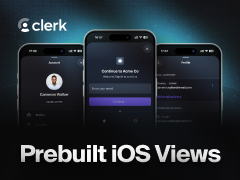By John Gruber

Clerk — Prebuilt iOS Views: drop-in authentication, profile, and user management.
- Google AMP Launch Looms
-
George Slefo, reporting for Advertising Age:
In short, AMP is like a diet version of HTML. It is extremely fast and incredibly quick when it comes to loading. JavaScript is essentially non-existent, for now at least, and images won’t load until they’re in the user’s view. AMP will also deliver content much faster because it will be cached via the cloud, meaning Google won’t have to fetch it from a publisher’s site each time a request is made.
The end result is a near instantaneous content delivery system.
Sounds great.
Come launch, publishers will be able to track analytics and sell ads. Solutions for paywalls were put into place Tuesday. And, crucially, Google will favor AMP sites over others with the same search score in the results it shows consumers, said Richard Gingras, senior director, news and social products at Google.
Hmm.
Update: Rafe Colburn:
Does Google AMP offer any advantage (other than reduced effort) over building something yourself with the same goals as AMP?
What if it doesn’t even involve reduced efforts. What about a site that already delivers clean HTML markup, minimal-to-no JavaScript, and images that load on demand (or, cough, a site with few-to-no images)? Why would Google favor an AMP site over such a site in search results?
Update 2: Ad Age has filed a correction to the story that retracts the claim that Google will favor AMP pages in search results.
★ Wednesday, 10 February 2016
